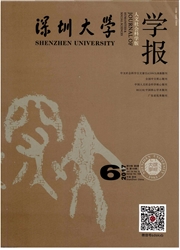

 中文摘要:
中文摘要:
中西医分别孕生于各自的文化背景、哲学基础和科技观念,拥有舍于自身特色的哲学思维范式.建构着各自的理论体系及历经了不同的发展路向。中医在长期的生命感悟和临床实践过程中形成了“取象运数.形神一体,气一元论”的中医原创思维模式,内含以整观体证、时间性、功能关系为主要特色的致思路向。西医在还原分析方法指导下注重“实体”实验结构性的逻辑思维,形成了以客观分析、空间性、实体结构为主要特征的思维路径。中西医哲学思维的差异性分别以“心境”与叫勿境”来滋养和承载各自医学的发展。虽对立却互补.而成为未来医学发展的强有力的哲学思维指导。
 英文摘要:
英文摘要:
Having evolved from two different cultural backgrounds, Chinese and Western medicines are supported by different philosophical foundations and conditioned by ifferent technological ideas. They each went through their own path of theorizing and developed their own philosophical thinking. From thousands of years of life-experience and clinical practice, Chinese medical thinking has distilled the monist theory of qi, which, based on perception of xiang (image) and operation of shu (number), aims at achieving the unity of body and spirit. This wholist way of thinking takes seriously Erlebnis, timeliness and functional relation. Western medicine, on the other hand, relies heavily on the ethods of reduction and logical analysis. It seeks to reveal the structure of substance with the aid of experiment and emphasizes objective analysis, spatiality and the structure of substance. Chinese and Western medicines are marked respectively by "sphere of mind" and "sphere of thing." Guided by these ideas, these two medical traditions, though seem incompatible, can be complementary. It is important for the future development of medicine to draw together these two traditions.
 同期刊论文项目
同期刊论文项目
 同项目期刊论文
同项目期刊论文
 期刊信息
期刊信息
